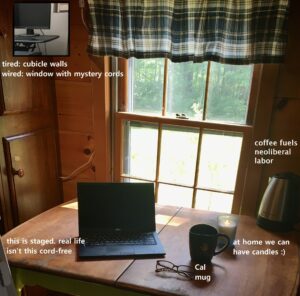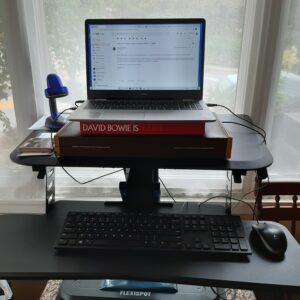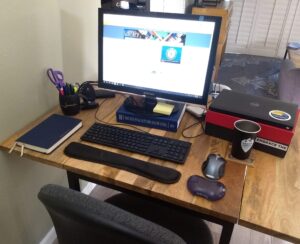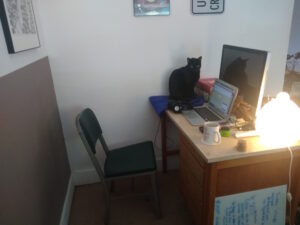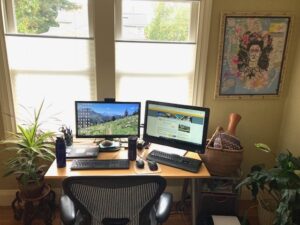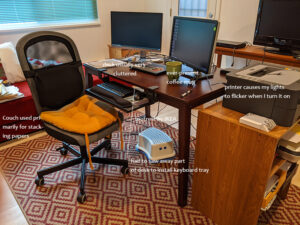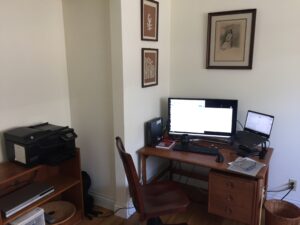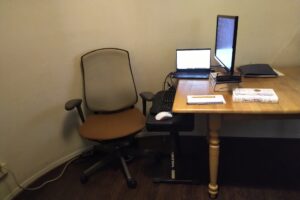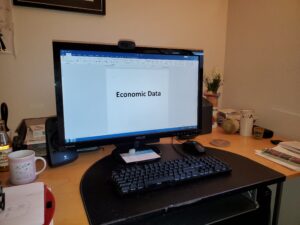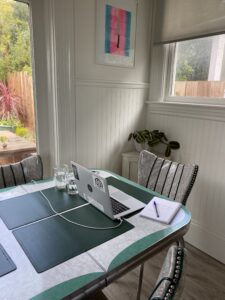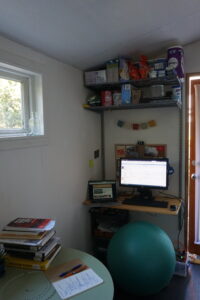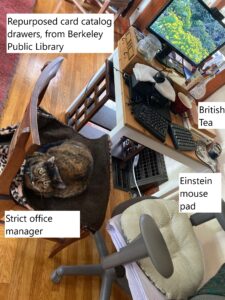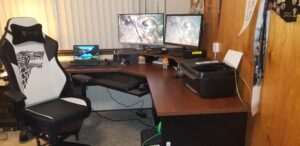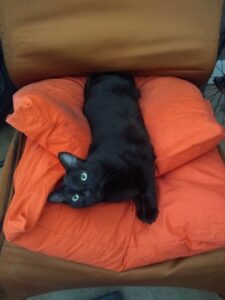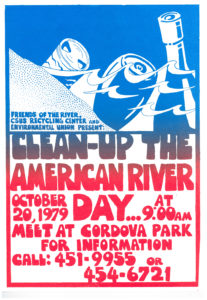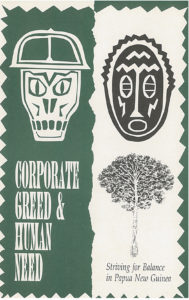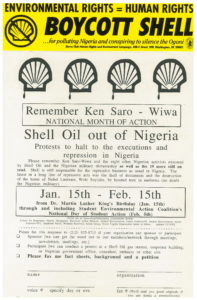Author: UC Berkeley Library
Trial: Exeter Medieval Online ebook collection
UC Berkeley has a trial for Exeter Medieval Online (ebooks) through October 29th, 2020. The collection combines Liverpool University Press’s Exeter Medieval Texts and Studies and Exeter Studies in Medieval Europe print series, covering a chronological range of c.500-1500, with a broad European focus. The interdisciplinary collection includes monographs, guides, collaborative studies, edited volumes, and translations of important texts on the history, literature, and culture of the Middle Ages. The ebook collection provides full-text digital access to 83 titles, which can also be downloaded to PDF.
During the trial period, we have access to a 50-ebook subset of the collection. Logging in with a CalNet ID is required.
To use additional features, you can optionally create a personal account from the ‘Institutional Account’ tab. This will allow you to:
Highlight Text
Add bookmarks
Add/ download Citations
Add/ download Notes
Mark it as Favourite (but this is available from the “My Library” section)
Your feedback makes a difference! Tell us what you think.
WFH edition (plus cats)
In the almost six months that we’ve been working at home we have tried to maintain a sense of community through meetings and retreats (via Zoom, of course), collaborative projects, and virtual coffee dates. However, beyond a few peeks on Zoom, we didn’t know what our colleagues’ work environments looked like, so we put out a call to our co-workers in the Social Sciences Division, asking them to share pictures of their home offices. We now present to you the range of ways we are continuing to stay connected to the Library and our work!
But first– a few words from colleague Natalia Estrada, who best sums up the challenge of working from home — even for those of us who were able to bring home our beloved dual monitors from our campus offices:
I live in a one bedroom apartment in a noisy part of town with a ton of construction. My spouse is also in academia, so we both are handling various Zoom meetings (sometimes at the same time!) and other large projects. You can imagine that working from home has been a challenge, bordering into impossible at times. The spouse and I have taken on many habits to try to make work-from-home in a small space work for us. We ended up rearranging our living room to create a better work station, using furniture we’ve acquired second hand (Urban Ore is a great place for this), plus taking certain needs into consideration. The work station, shared between the both of us, includes:
- a whiteboard used for teaching
- headphones, so I can block out distractions while I listen to a delightfully informative podcast (or the new Phoebe Bridgers album)
- two of our thickest cookbooks to use as laptop stands for presentations
- a desktop usually for processing large data sets, but also useful for touch ups before all those video meetings
- one of our many much needed mugs (this one comes from Valois in Chicago)
- a “work station” for our cat/office manager, so she can hang out while we work (she is a very good cat, but a bad office manager)
- artwork! Because artwork works great as a background (better than a laundry rack, at least for us). We like both the block print from Suzhou, China, and the concert poster from when Japanese metal band Boris played at Amoeba.
We’ve still faced various hurdles that make it hard for us to work at 100 percent, especially when one has the desk and the other has to Choose-Your-Own-Adventure a second work spot (the couch? the bed? the kitchen? the choice is yours!). But, hey, my cat digs all the attention she gets on Zoom!
“A bit surreal” – a return to campus
Dispatch and photos by Peter Basmarjian, Social Sciences Division Student Supervisor
Being back on campus after almost four months has been a bit surreal. Last week a handful of staff began the work of sorting and checking in all of the accumulated books that have been returned since March.
Recently returned items are quarantined separately for a week. Then books are checked in and sorted by division.
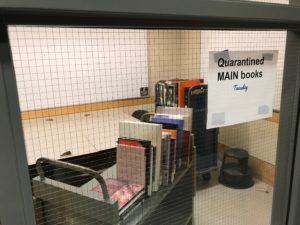
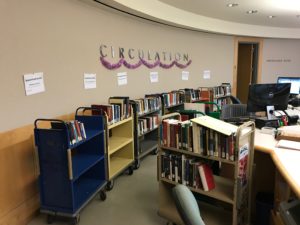
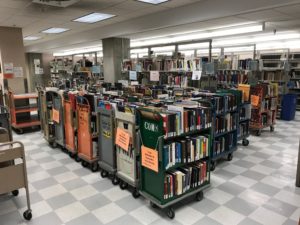
Here are a few more scenes from around the Library. The janitorial staff did an incredible job cleaning the library from top to bottom and the plants in the AIDS Memorial Courtyard have been recently watered and are doing well.

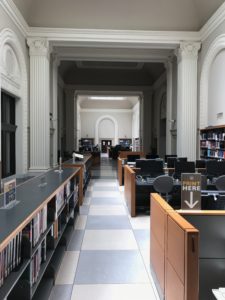

Newly-processed additions to the Sierra Club Records at The Bancroft Library are the latest highlight of an NHPRC grant-funded project to make available 13 archival collections relating to environmental movements in the Western U.S.
Happy Birthday to the Sierra Club – turning 128 years old this month
And many more! Now one of the oldest and largest conservation organizations in the world, the Sierra Club was founded on May 28, 1892 in San Francisco by John Muir to promote conservation of the natural environment through public education, legislation and citizen action. Since then, the club has achieved a number of notable victories, including establishing and protecting national forests, parks and monuments; stopping dam construction in the Grand Canyon and Dinosaur National Park; fighting to keep the Antiquities Act intact; and campaigning for the passage of the Alaska National Interest Lands Conservation Act and the Wilderness Act.
Fortunately, the significance of this non-profit organization’s unparalleled history of conservation was recognized early on, even before the modern environmental movement truly took off. In 1958 The Bancroft Library became the official repository for the Sierra Club. The first series of records from the organization came through Bancroft’s doors in the 1970s. Over the decades the collection has grown with periodic installments as more recent records are added to the archives. The Sierra Club collection is a significant part of what has evolved into a major collecting theme within Bancroft’s curatorial umbrella of Western Americana: environmental movements of the 20th century.
Project wrap-up: NHPRC grant makes available newly-opened environmental collections and additions to ongoing collections
The Bancroft Library is pleased to report the completion of a two-year National Historical Publications and Records Commission (NHPRC) grant project resulting in the processing of 13 collections totaling 384.25 linear feet of records. These newly-accessible resources include the latest additions to four collections of Sierra Club records, along with nine other archival collections relating to environmental movements in the Western U.S.
The collections processed for the project — selected by Theresa Salazar, Bancroft’s Curator of Western Americana — were chosen because of high demand and their likely benefit to multiple areas of scholarship. Topics in these collections include a wide range of ecological issues related to protection and conservation of the environment via legislation and greater transparency and accountability in the wake of environmental damage. The research value of these collections is potentially wide and diverse, especially for scholars in fields such as history, environmental and forest science, natural and renewable resources, environmental and social justice, indigenous rights, human rights, animal rights and endangered species.
Archival processing of environmental collections
Processing archival collections entails intellectual and physical arrangement and description of the papers or records in a finding aid and catalog records published in library catalogs. When processing, archivists look for evidence of archival value in the materials to justify their continued preservation and storage. This is generally defined as the ongoing usefulness and significance of the materials in regards to the administrative, legal, fiscal, evidential or historical information they contain.
The processing of the Sierra Club records has proven to be especially complex. Because the organization’s records comprise a large and complex body of material, the Library determined early on that the material would be divided into more easily processed sub-collections, each of which would be further organized according to the conventional archival hierarchy of series and sub-series. These sub-collections include the general Sierra Club records, the Sierra Club San Francisco Bay Chapter and the Sierra Club California Legislative Office records, among many others.
Types of records found in the Sierra Club and other environmental collections at Bancroft may include correspondence and notes, grassroots organizing, outreach and educational campaigns, membership and promotional materials, program and subject files, reports and studies, lobbying letters, testimony, legislation and legal briefs, newsletters, clippings, maps, photographs and posters. Numerous Sierra Club oral histories, audio-visual materials and related pictorial collections can also be found at Bancroft.
Bancroft a leading repository for U.S. environmental documentation
Environmental collections are among the most frequently used materials at Bancroft. As is reflected in the material selected for the NHPRC grant, The Bancroft Library holds the records of many important environmental organizations and the papers of a range of influential environmental activists. Collections of other environmental organizations currently available for research at The Bancroft Library include the records of the Jenner Coastside Conservation Coalition, Save the Bay, Save-the-Redwoods League and Urban Habitat. Also available are the papers of environmental educators, leaders and activists such as David Brower, Newton B. Drury, Mark Evanoff, Aldo Leopold, Robert Marshall, Sylvia McLaughlin and Margaret Wentworth Owings. The Bancroft Library also holds pictorial collections pertaining to Ansel Adams and the Rainforest Action Network, and many collections of photographs showing degradation of the environment caused by deforestation and logging, wildfires, toxic substances and pollutants, floods, drought, and war.
Collection guides and further reading
Descriptions of The Bancroft Library’s archival collections can be accessed by searching Oskicat for catalog records and at the Online Archive of California for more in-depth finding aids. Selected digitized material from these collections is available via Calisphere and the UC Berkeley Digital Collection. In-person access to Bancroft’s collection material can be requested by the library’s online request service Aeon and by visiting the library’s Heller Reading Room during open hours.
Within many of the environmental movements there are overlapping figures and groups, such as Berkeley’s own David Brower who was the first Executive Director of the Sierra Club and co-founder of Friends of the Earth and Earth Island Institute. It is therefore advisable that researchers look for information pertaining to “related collections” and “materials cataloged separately” when consulting collection guides. Such notes are usually presented in the catalog record and among the introductory information of the finding aid for any given collection.
Finding aids for the environmental collections recently made accessible by the NHPRC grant project are linked here:
- Arizona Toxics Information records
- Earth Island Institute records
- Friends of the Earth records
- Friends of the River Foundation records
- Kenoli Oleari records of the Coalition for Alternatives to Pesticides
- Rainforest Action Network records
- Small Wilderness Area Preservation records
- Trustees for Conservation records
- Thomas J. Graff papers
- Sierra Club records
- Sierra Club California Legislative Office records
- Sierra Club Legal Defense Fund records
- Sierra Club San Francisco Bay Chapter records
Previous UC Berkeley Library Update posts from the past two years delve deeper into the histories, activities and records of some of the organizations whose collections were made accessible via the NHPRC grant project. In addition to the collection descriptions found in each collection’s finding aid, these Library Update articles offer helpful overviews and are illustrated with images of noteworthy collection material.
To learn more about Arizona Toxics Information and their fight to promote transparency and the right-to-know about pollutants and toxics along the Arizona-Mexico border, go here.
For an article on Earth Island Institute’s role as a Berkeley-based incubator network for conservation groups, including the Marine Mammal Institute, follow this link.
To find out more about the Friends of the River Foundation and their river protection campaigns, including their lengthy battle to halt construction of the New Melones Dam along the Stanislaus River, read this article.
A post about the Rainforest Action Network and their international campaigns to protect forests and promote environmental justice can be accessed here.
Information about the Sierra Club Legal Defense Fund (renamed Earthjustice in 1997) and why “the earth needs a good lawyer” can be found in this post.
California State Resources for COVID-19
Everyone seems to have a something to say about COVID-19:
- Dippin’ Dots wants you to know that “in these challenging times, Dippin’ Dots is committed to doing our part to navigate through this unprecedented situation.”
- Hollywood celebrities have gotten into the act too. Many of the social media links in this article on the Top-10 Tone Deaf Celebrity Coronavirus Messages are Cringy AF (via Listverse) have since been taken down for, well, being cringy AF, we’re guessing.
- And then there was the incongruous yet insightful tweet from Steak-umm, a frozen steak company, stating that “anecdotes are not data. (good) data is carefully measured and collected information based on a range of subject-dependent factors, including, but not limited to, controlled variables, meta-analysis, and randomization.”
Resources from the State of California related to COVID-19: But much of the messaging we’re receiving these days — from county public health officials to utility companies to our streaming services — is both important, highly relevant and reassuring. Add to the list of important information regarding COVID-10 this UC Berkeley Library Guide:
California Resources: COVID-19

Created by Political Science and Public Policy Librarian Natalia Estrada, this guide lists resources produced by the state of California related to COVID-19. The guide links to data on COVID-19 at the national,state and county level; there are also links to COVID-related information from the state as it relates to areas of public health and healthcare, the economy, education, and housing. This is an evolving guide and Natalia will update it and add additional resources as they become available.
In the meantime, although the Library’s doors are closed, many of our services remain available.
Stay safe!
Digital Humanities Fair 2020 – Online
Join us for the 2020 Digital Humanities Fair — fully online! We are excited to share with you a rich line-up of lectures, workshops, and the DH Fair Poster Session during the week of April 13-16, including lectures by Tom White of the Victoria University of Wellington School of Design and Christiane Paul of the Sheila C. Johnson Design Center, The New School and the Whitney Museum of American Art.
The DH Fair Poster Session will feature Professor James Smithies, Director of King’s Digital Lab in London, speaking on the topic of Applying AI to storytelling. Then, learn about recent and current Digital Humanities work at UC Berkeley and beyond through our virtual poster session. The Poster Session will take place on Tuesday, April 14th from 1:00-3:30pm and requires advance registration. If you have a project to share, whether fully polished or a work in progress, we invite you to propose it!
The DH Fair is open to all. Some events will be publicly streamed, and others require advanced registration. Visit the website for details. See you then!
Thank you to our sponsors:
Arts Research Center
Berkeley Center for New Media
DH Working Group (Townsend Center)
D-Lab
The Library
V-Lab
Online Reference Services and Research Help
The Library’s reference services have moved online at least through April 7th. Please see Remote Resources for UC Berkeley Library Users for the latest information on library services and resources. During this time, the Engineering & Physical Sciences Libraries are offering several ways to get reference service and research help.
Contact a Librarian
Librarians are available Monday – Friday during business hours to answer any questions you might have. Email one of us with your question or click the link to schedule an online meeting. If you’re not sure who to contact, feel free to use the Ask a Science Librarian form.
- Mathematics, Statistics, Computer Science: Brian Quigley (email; schedule a meeting)
- Civil & Environmental Engineering, Industrial Engineering & Operations Research, Mechanical Engineering, Nuclear Engineering: Lisa Ngo (email; schedule a meeting)
- Bioengineering, Electrical Engineering, Materials Science, Research Data Management: Anna Sackmann (email; schedule a meeting)
- GIS & Maps, Geography: Susan Powell (email; schedule a meeting)
- Open Science, Earth & Planetary Science: Sam Teplitzky (email; schedule a meeting)
- Chemistry, Chemical & Biomolecular Engineering, Physics, Astronomy: Kristen Greenland (email; schedule a meeting)
24/7 online help
Chat: Chat with a librarian. The chat service is staffed by Berkeley librarians, but at peak service times or off-hours you may be connected with a librarian from another academic institution.
Online guides, tutorials and videos:
- Library Research Guides – Librarian experts have created these pages to help you find resources and services by subject, course and topic at UC Berkeley.
- Remote Resources for UC Berkeley Library Users – Access expert help and remote services through this guide to library resources.
Connecting from off campus
If you are not on campus, use EZProxy or the VPN (VPN users: choose Library Access – Full Tunnel rather than the default Split Tunnel) to authenticate yourself as a Berkeley student, faculty, or staff to access online books, journals, databases, and other resources.
If a desired resource is not available as a full-text version online, Berkeley students, faculty, and staff may be able to place a request for a digital copy through our Interlibrary Borrowing Service. Check their website for current information on what is available through this service.
Twelve things to know about Natalia Estrada
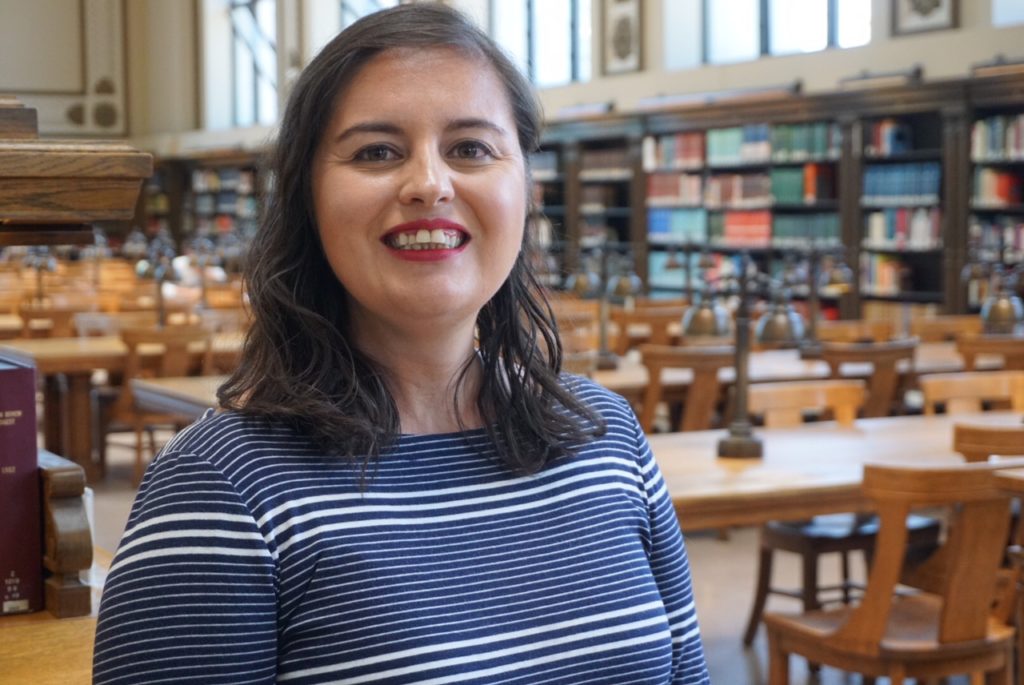
We are pleased to welcome the newest librarian in the social sciences division, Natalia Estrada. She is the Political Science & Public Policy Librarian, and is responsible for reference, instruction and collection development for the department of political science, the Goldman School of Public Policy, and legal studies. She is also the specialist for California government documents.
In a vague mash-up of the Vanity Fair Proust Questionnaire, the New York Times Book Review’s By the Book column, and Us Weekly’s 25 Things You Don’t Know About Me feature, here are twelve things about Natalia:
- I was born and raised in Downey, CA, spent a good number of years in Chicago, and have lived in the Bay Area since 2011.
- Before UC Berkeley, my library and cultural center work experience has included UC Hastings, the Center for Research Libraries, and the Museum of Contemporary Art in Chicago.
- I’m very much a puzzle solving/trivia answering sort of a person. I used to participate in the UChicago Scav Hunt during my undergrad years, I’m still searching for a good bar trivia spot, and I used to complete Sporcle quizzes for fun.
- I actually don’t spend a lot of my free time reading, so I’m pretty selective about the books I’ll read. Usually I go with horror, maybe some sci-fi, and non-fiction.
- Most of my reading gets done either during my lunch break, or when I’m on a flight. Nothing makes a better reading environment than being stuck on a plane.
- The last book I finished was Severance by Ling Ma, I’m a quarter through House of Leaves by Mark Danielwski, and I’m hoping to read In the Dream House by Carmen Maria Machado.
- My favorite book is We Have Always Lived in the Castle by Shirley Jackson. My older sister introduced me to Jackson via The Haunting of Hill House and “The Lottery” when I was in middle school, and I got hooked.
- The last great trilogy that I read was the Remembrance of Earth trilogy (aka Three Body Problem) by Cixin Liu.
- I have a small but mighty cookbook and food writing collection at home. It has your more popular cookbooks (Salt, Fat, Acid, Heat by Samin Nosrat, Bar Tartine by Nicolaus Balla and Courtney Burns), but it also has some special finds, like the 1964 edition of the Joy of Cooking.
- I cringe whenever someone ties librarianship with a “love of books.” I’m focused on helping you find the right resources for your research. Books are just a part of that, not the whole thing!
- I listen to a lot of podcasts, especially when I need to do large chunks of work, chores, or working out. Many are news based (Morning Edition, The Daily), subject deep dives (Throughline, Science Vs., The Dream), and yes, true crime (the second season of You Must Remember This, with its focus on the Manson Family Murders and Hollywood, is one of my favorites).
- My favorite movie is Tampopo, but the movie I’ll always watch is Jurassic Park.
Data Publishing with Dryad Digital Repository

The California Digital Library (CDL) recently partnered with Dryad to provide enhanced data publishing and curation support for researchers. Dryad is a free service that enables researchers to archive and make publicly available their research data for the long term. Dryad replaces Dash, which was the data repository previously available to the university.
Datasets published in Dryad receive a Digital Object Identifier (DOI) and a citation, both of which provide the data a persistent location, identification, and makes the data citable in future use. Additionally, Dryad fulfills many of the data sharing requirements stipulated by funders and publishers, many of whom may require that data be made freely and openly available at the end of a project or upon publication.
Publishing data to Dryad is relatively quick and easy. As a UC Berkeley researcher, begin the upload process by signing in to Dryad using your ORCID ID. The data is then reviewed by a curator, meaning the data is reviewed and enriched to be Findable, Accessible, Interoperable, and Reusable or FAIR. By making your data FAIR, others in your area of expertise will be able to locate, understand, and potentially reuse the data you generated. Data that is made easily findable and publicly available contributes to raising the quality of scholarly output by making the process of data production transparent. Funders require data publishing to better leverage research dollars and publishers require data publishing to enhance the quality of scholarly literature.
Please visit datadryad.org to explore published datasets. If you have any questions about preparing your data for publication or using Dryad, please contact researchdata@berkeley.edu.
It takes a village to answer a reference question
Answering reference questions is the bread and butter of what many of us do as librarians. But rarely do we in the Social Sciences Division get the kinds of questions that Emilio Estevez portrayed in his 2018 film The Public. *
In fact, we believe that there are no “dumb” questions and will gladly help our patrons with any of their information needs. More often than not, our patrons have deep and complex research needs that challenge our expertise (and make our jobs fun) and require the collective knowledge and experience of our colleagues.
Take, for example, this query that came in:
“What is the cost of the social safety net in the US?”
To effectively answer this query we engaged in a dialogue with the researcher (what’s known as the “reference interview” in library-speak). In a case like this we want to: determine what kind of data they are hoping to find; determine specific geographic and time constraints; and clarify what, exactly, they mean by social safety net. Are they talking about public/government spending? What about private and philanthropic spending on the social safety net? Do they mean support for low-income people specifically, or all of society?
Jim Church, Librarian for Economics, Political Economy, and International Government Information, suggested OECD Stats which contains statistics by country from the multinational Organisation for Economic Co-operation and Development. OECD Stats has a section for Social Protection and Well Being including, among other things, pensions, sick leave, disability, unemployment, housing assistance, etc. Users can go to Social Expenditure – Detailed Data: United States.
Susan Edwards, Social Welfare Librarian and Head of the Social Sciences Division, suggested that for US data on the federal side, the Green Book provides statistical data of the major entitlement programs (Social Security, Medicare, Temporary Assistance for Needy Families, etc.) overseen by the Committee on Ways and Means. If, however, the researcher is looking into private and philanthropic spending on the social safety net, they can consult GuideStar and the Foundation Directory which provide information about the budgets of a wide range of nonprofit organizations and public charities.
Ann Glusker, Sociology, Demography, & Quantitative Research Librarian, suggested that the researcher remember to consider “grey literature”, which may not appear in peer-reviewed journals or formal publications, but which comes from reputable and reliable sources and which can add a lot to the published literature. In this case, the researcher may want to consult offerings and also staff in Berkeley’s Center for Comparative Family Welfare and Poverty Research, or Stanford’s Center on Poverty & Inequality, which has a page devoted to Safety Net Use.
Monica Singh, Business Librarian, suggested the researcher look at a couple of very helpful guides created by Jesse Silva, Scholarly Resources Strategy and Federal Government Information Librarian; Getting Started with the US Census has a tab on Social/Economic Census Sources.
A happy ending? We never saw the end result of the person’s research. We often send researchers on their way and don’t know how they use the information we’ve provided. But, considering we receive many return visits we must be doing something right.
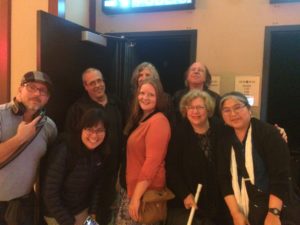
* Note: members of the Social Sciences Division went on a field trip to see The Public when it was playing in the theaters. While we gave Emilio Estevez an “A” for good intentions, some of us wish we’d been able to make suggestions about the dialogue and plot!

